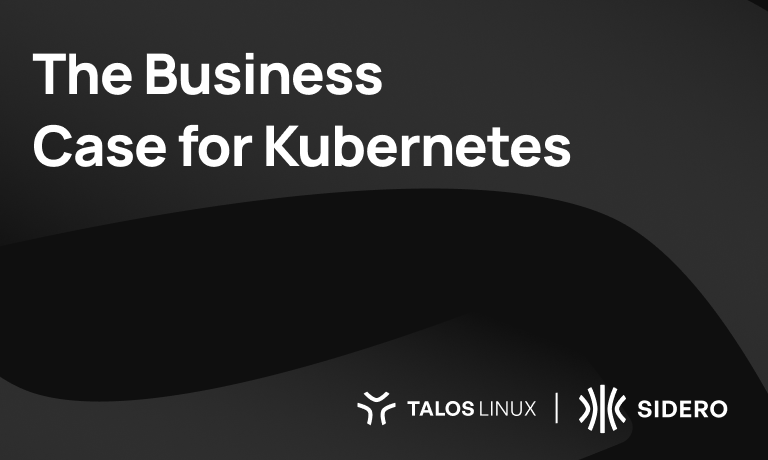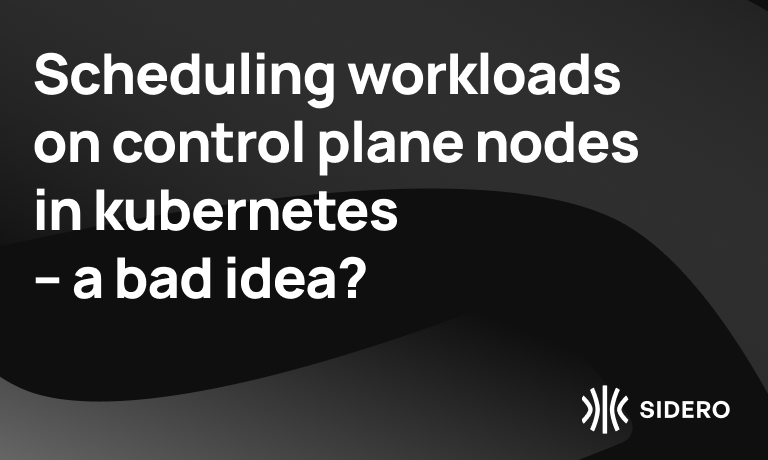The cloud cost trap: Why Kubernetes workloads are more expensive than you think (and what to do about it)

It’s time we acknowledge that cloud providers making things cheaper because of “economies of scale” didn’t happen. It was the promise made by cloud providers for years as incremental price cuts became hidden fees. AWS is making a billion dollars per month, and you’re paying for it, not to mention Azure and GCP. Economies of scale turned out to be synonymous with record profits for hyperscalers, and your FinOps team is left scrambling to optimize spend.
Like a landlord without rent protections, cloud providers have continued to take advantage of lock-in to collect. But what happened to the promise of Kubernetes portability? Wasn’t that supposed to help avoid lock-in and make infrastructure more portable and efficient?
There has always been value in making infrastructure efficient and affordable, but now the pressure is real. IT budgets are changing due to geopolitical uncertainty and investments shifting towards areas like security or AI. Respondents to the 2025 State of FinOps Survey even rank workload optimization and waste reduction as their #1 priority this year. Being told to magically cut your costs might seem like a big–maybe borderline impossible–task, but this could be a great opportunity. This is a chance to break old patterns and rethink our understanding of ownership, namely, by understanding what you need and investing in your own freedom and flexibility.
Here’s why you’re spending too much renting from the cloud, and what you can do about it.
What Kubernetes in the cloud really costs
In the past, I’ve worked with countless companies who said their main goal was to save money on their cloud bill. They couldn’t afford, nor did they expect, the rising costs. I analyzed their biggest costs and would write best practices for them, but it always came down to the same three steps: Right-size your EC2 instances, reduce your network traffic, and use reserved and spot instances. That was it. If you do those things, you might reduce your bill by 30% or 40%. There was no magic trick to reducing cloud spend.
All three of those suggestions would take a team of people a year or more to implement. They would dedicate engineering time costing hundreds of thousands of dollars to measure, refactor, and implement solutions that could justify staying in the cloud. But a year later, they’d be back in the same place with surprise bills and new applications to optimize.
These companies had presumably been happy with their decision to move to the cloud at first, but over time, it became clear there was a lot more going on than it seemed. They had gotten rid of all the “unnecessary” people who used to rack and stack servers, only to replace them with more expensive FinOps or cloud specialists teams.
They hadn’t foreseen the problem of unexpected cloud fees and customer-hostile pricing. They would think, “How much could it really cost at $.01 per GB?” Then be amazed at how much they were paying for a resource that used to be free.
Why cloud feels easier even when it’s not
The marketing and rhetoric around cloud is truly compelling, and as a result, cloud just feels good. Even if it’s not actually a single, easy-to-understand destination, it is a clear marketing goal that companies don’t want to be left out of. When you want to go to the cloud, you can pick a well-known provider, put in your credit card, and hit “go.” There’s instant gratification, speed, and the ability to experiment with no long-term commitments. However, while the features and speed can be beneficial, chances are, you don’t need them nearly as much as you think.
All of this is opposed to on-prem, where there is no single destination or vision of what it looks like. It takes a lot more planning and up-front costs to get started, and it leads many to assume that the only alternative to the cloud is to build a data center and hire security guards. But this isn’t the case.
When to move Kubernetes off the cloud
When I helped launch Disney Plus, we had 10 million signups on the first day. We couldn’t have handled that amount of unknown load without our cloud infrastructure. It allowed the service to handle the temporary demand and gave us options for deploying to new regions when we faced issues.
But it wasn’t all dynamic scaling. It was carefully planned and calculated. We spent way more in infrastructure costs temporarily because we knew an unsuccessful launch would have impacted the stock price negatively. Instead of relying on dynamic scaling, we pre-scaled everything for weeks and scaled it back down when the numbers began to equalize. After the initial surge of demand, we could more carefully look at how much infrastructure we needed long term and reevaluate what we were renting from a cloud provider or what we should own on-prem.
If you need a ride from the airport to your house, you don’t have to own a car. You can get a taxi. The same is true for your infrastructure.
You wouldn’t rely on a taxi if you know you need to use a car every day. It wouldn’t be financially responsible to spend that much money even if owning a car has additional costs like maintenance and insurance. But the cloud has convinced us that owning servers is just too hard. Now, people are looking at their requirements and public cloud infrastructure expenses and are realizing that The Cloud shouldn’t be the default option.
There are plenty of reports of companies saving millions of dollars by moving some of their workloads out of the cloud. The exact price point at which it makes financial sense for you to move away from the cloud will depend on your workload, business requirements, and other factors.
These aren’t exactly guidelines, but here are points at which you should start asking the tough questions. You can find more details in my article on The New Stack.
- Are you spending $50,000 a month and can project that spend for a year? One option is to buy a server and put it in a colocation facility. Even if you don’t want to buy something, in my experience, the price per performance and total capacity will be better by renting dedicated servers in a colocation facility or a smaller cloud provider. Even at small scales, savings can add up. Projects like Zig have found moving off of AWS to Hetzner brought 94% savings and a much simpler architecture.
- Are you spending $100,000 a month and can project that spend more than a year? You likely have a very complex environment and are spending a lot of money on specialists to help manage your cloud and understand your bill. You can save a lot of money on people with a white-glove service in a colocation facility.
- Are you spending $200,000 a month and can project that spend more than a year? When you’re spending this much money, you have significant complexity, and you’ll save time by reducing complexity and increasing speed to deliver business value.
These should give you food for thought when looking at your infrastructure. If you’re unable to make long-term calculations about your infrastructure or need to outsource certain high-level services, then the cloud remains a great option.
A word of warning: The return to on-prem should not mean the return to old processes. In the cloud, we’ve gotten used to APIs that let us deploy and change our infrastructure. APIs are not reserved for cloud providers. There has been a lot of progress in making developer-friendly, API driven infrastructure on-prem.
We built Talos Linux with an API-first ethos from the ground up. With Talos Linux, everything is an API. It removes complex automation with intent-based configuration. This enables you to have strong, reliable infrastructure that isn’t at risk of being undermined by manual changes.
The question is, what is the speed and convenience of cloud worth to you? Would bringing infrastructure on-prem in some capacity pay off in the long run? When does that ownership start to become valuable to you? Maybe the cloud is still more than worth it for you. Maybe it’s not, and if that day has come, best practices won’t save you.
Here’s your cloud vs on-prem tl;dr: This is when it makes financial sense:
- If you’re spending over $50K/month in AWS, consider colocation.
- Over $100K/month? Dedicated on-prem clusters often reduce costs and complexity.
- Over $200K/month? Hybrid strategies can save millions annually.
Learn how platforms like Talos Linux and Omni make modern on-prem Kubernetes easy, secure, and API-driven. Check out how we cut Kubernetes infra costs or get started with Omni now.
Never miss an update! Sign up to receive our monthly newsletter.
Talos Linux and Omni provide the foundation for a fully flexible, secure Kubernetes infrastructure that spans cloud providers, bare metal, edge, and data centers as well as clusters split across environments. Do you have 15 minutes? Let’s discuss how you can take control of your Kubernetes infrastructure with Talos Linux and Omni.


